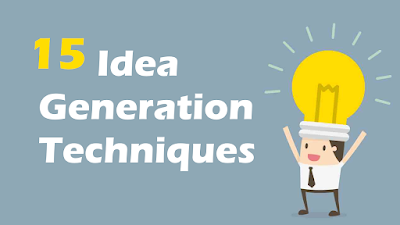Idea Generation Techniques
1. Brainstorming
This is a classic technique where a group of people comes together to generate ideas in a free-flowing manner, without criticism or judgment. This can be done individually as well.
2. Mind Mapping
Start with a central idea or topic and branch out with related ideas. This visual technique helps in organizing thoughts and finding connections between different concepts.
3. SCAMPER Technique
This acronym stands for Substitute, Combine, Adapt, Modify, Put to another use, Eliminate, and Reverse. It's a method for exploring different ways to modify or improve existing ideas.
4. SWOT Analysis
Analyze the strengths, weaknesses, opportunities, and threats related to a particular idea or situation. This can help in identifying areas for improvement or potential new directions.
5. Provocation
Purposefully provoke new ideas by asking provocative questions or making bold statements. This can help break out of conventional thinking patterns and encourage creativity.
6. Role-playing
Put yourself in someone else's shoes or imagine different scenarios to generate new perspectives and ideas.
7. Random Word/Phrase Association
Start with a random word or phrase and brainstorm ideas that are somehow related to it. This can lead to unexpected and creative connections.
8. SCAMPER for Specific Contexts
Apply the SCAMPER technique specifically tailored to the context of your problem or project. For example, SCAMPER for product design, marketing, education, etc.
9. Six Thinking Hats
Developed by Edward de Bono, this technique involves looking at a problem from six different perspectives represented by six imaginary hats: white (facts), red (emotions), black (caution), yellow (optimism), green (creativity), and blue (control).
10. Visualization
Use visual aids such as drawings, diagrams, or charts to explore and develop ideas. Visual thinking can often lead to new insights and solutions.
11. Lateral Thinking
Developed by Edward de Bono, this technique involves approaching a problem indirectly and creatively, often by making unexpected connections between seemingly unrelated concepts.
12. Storyboarding
Create a visual narrative of your idea or project, breaking it down into key scenes or steps. This can help in refining and communicating the idea more effectively.
13. Crowdsourcing
Gather ideas and input from a diverse group of people, either through online platforms or in-person workshops. This can bring in fresh perspectives and insights.
14. Problem Reversal
Instead of trying to solve a problem directly, try to imagine ways to make the problem worse or to achieve the opposite outcome. This can lead to innovative solutions by challenging assumptions.
15. Mindful Observation
Pay close attention to your surroundings and everyday experiences, looking for inspiration and ideas in unexpected places.
Choose the techniques that resonate with you and your project, and don't be afraid to mix and match different approaches to suit your needs.
Choose the techniques that resonate with you and your project, and don't be afraid to mix and match different approaches to suit your needs.

No comments:
Post a Comment